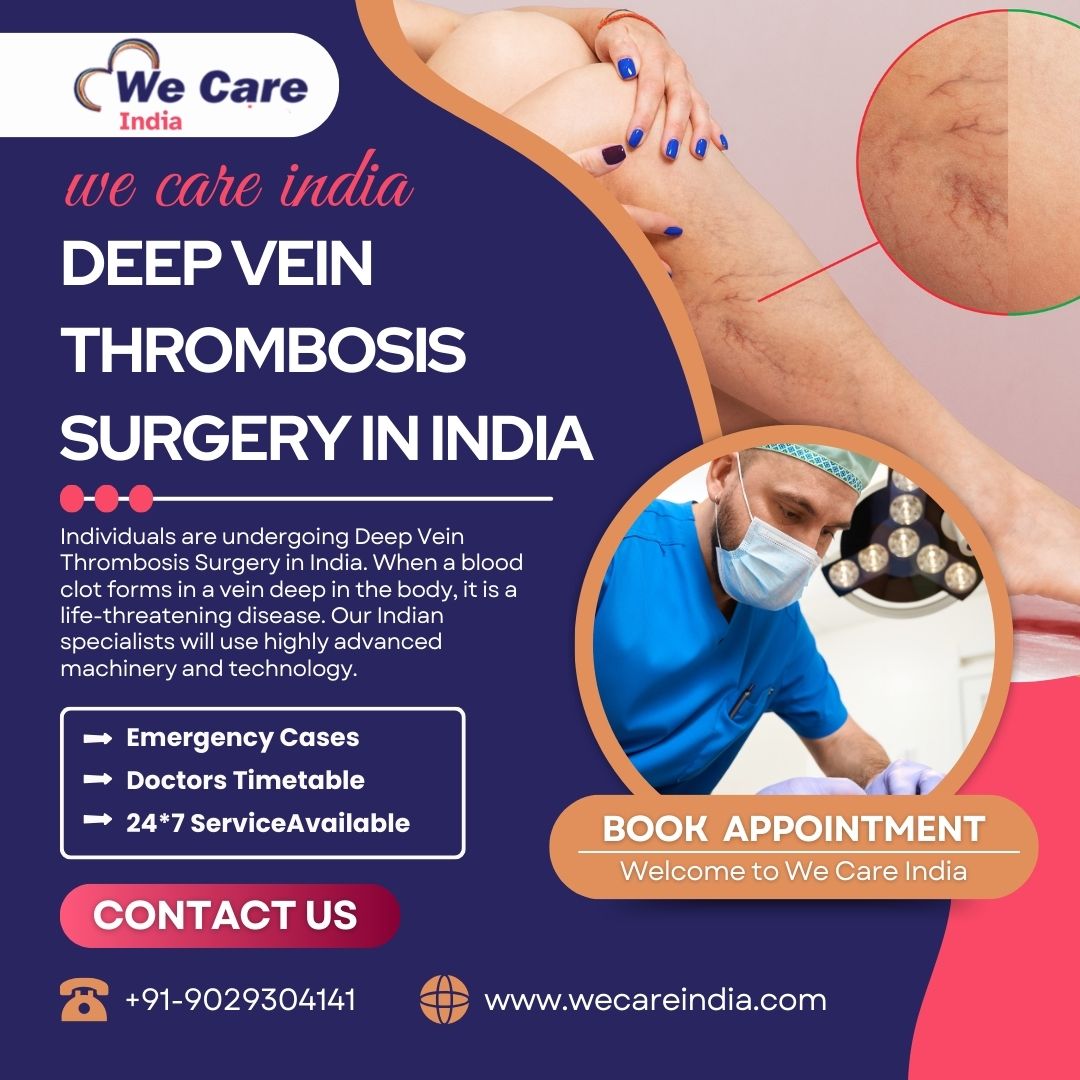Understanding Deep Vein Thrombosis (DVT)
Deep Vein Thrombosis (DVT) is a serious condition in which blood clots form in deep veins, usually in the legs. If left untreated, these clots can break loose and travel to the lungs, causing a life-threatening condition known as a pulmonary embolism (PE). While medication and lifestyle changes are the first line of treatment, severe cases require Deep Vein Thrombosis Surgery in India to remove or dissolve the clot effectively.
India has emerged as a top destination for advanced medical treatments, including DVT surgery. With highly skilled specialists and world-class healthcare facilities, patients from across the globe seek treatment here at an affordable cost.
Causes and Risk Factors of Deep Vein Thrombosis
DVT can occur due to several reasons, including:
- Prolonged immobility — Long flights, bed rest, or hospitalization
- Surgery or injury — Increases the risk of blood clot formation
- Obesity — Puts extra pressure on veins
- Smoking — Damages blood vessels and increases clotting risk
- Genetic predisposition — Family history of clotting disorders
- Pregnancy — Hormonal changes can lead to increased clotting risk
Symptoms of Deep Vein Thrombosis
Some individuals with DVT may not experience symptoms, but common signs include:
- Swelling in one leg
- Pain or tenderness, especially when standing or walking
- Skin discolouration (red or bluish tone)
- Warmth in the affected area
If you experience these symptoms, seeking immediate medical attention is crucial.
For patients seeking expert care, We Care India offers access to leading specialists and hospitals for DVT surgery.
Contact Us: +91–9029304141
Email Us: info@wecareindia.com
Deep Vein Thrombosis Surgery in India: Treatment Options
When DVT is severe or doesn’t respond to medication, surgery may be required. The main procedures include:
1. Thrombectomy (Surgical Clot Removal)
A thrombectomy involves making a small incision to remove the clot from the affected vein. This is often performed in cases where the clot is large or causing significant complications.
2. Catheter-Directed Thrombolysis
A minimally invasive procedure where a catheter is inserted into the vein to deliver clot-dissolving medication directly to the affected area. This method is highly effective and reduces the risk of complications.
3. Vena Cava Filter Placement
For patients who cannot take blood thinners, a filter is placed in the vena cava (a major vein) to prevent clots from travelling to the lungs, reducing the risk of pulmonary embolism.

Deep Vein Thrombosis Surgery in India
Why Choose India for DVT Surgery?
India is a preferred destination for Deep Vein Thrombosis Surgery in India due to:
- Highly experienced vascular surgeons trained in advanced procedures
- State-of-the-art medical facilities with cutting-edge technology
- Affordable treatment costs compared to Western countries
- Personalized patient care with high success rates
Recovery and Aftercare
Following DVT surgery, patients must take precautions to prevent further clot formation:
- Regular movement and exercises
- Wearing compression stockings
- Staying hydrated and maintaining a healthy diet
- Taking prescribed anticoagulants as directed
Conclusion
Deep Vein Thrombosis is a life-threatening condition that requires immediate medical attention. For severe cases, Deep Vein Thrombosis Surgery in India offers a highly effective treatment option with excellent success rates. If you or a loved one needs expert care, seeking treatment at a reputable healthcare facility is essential.
For professional consultation and top-quality treatment, contact We Care India today.
Contact Us: +91–9029304141
Email Us: info@wecareindia.com





Comments